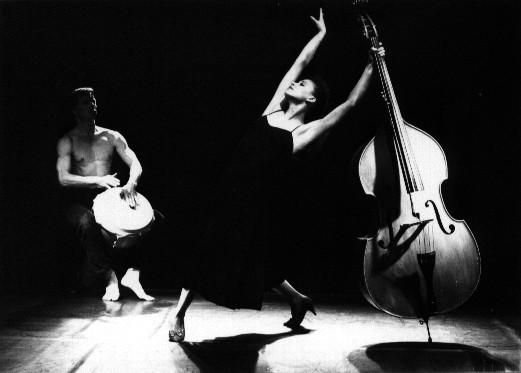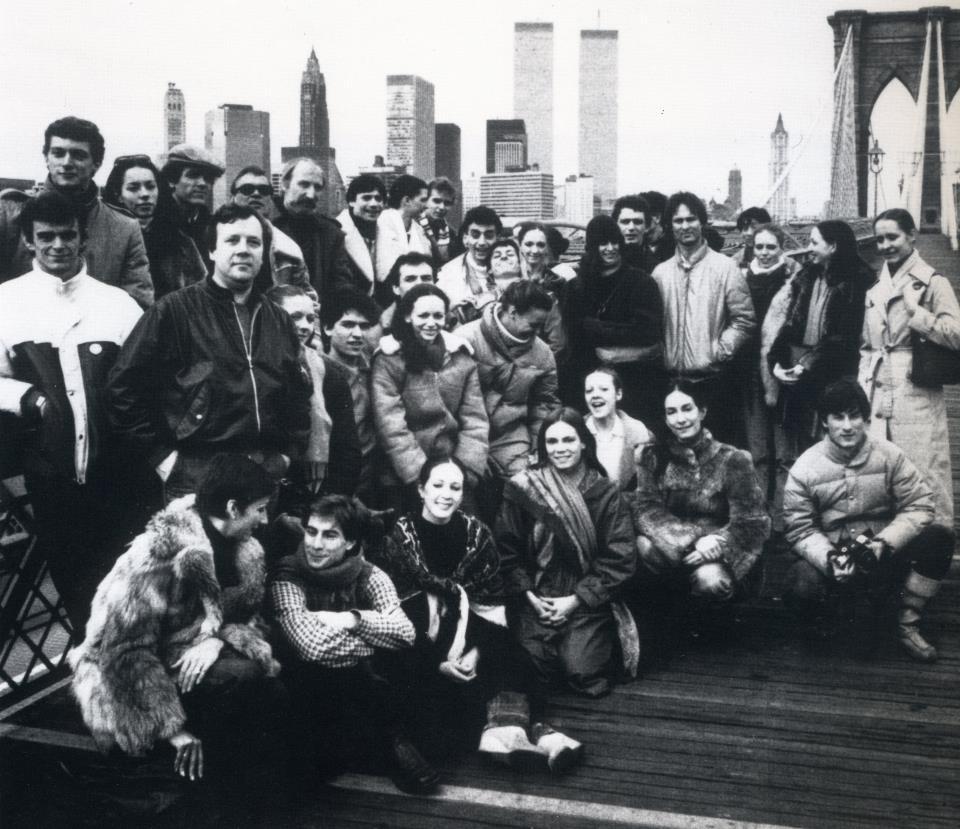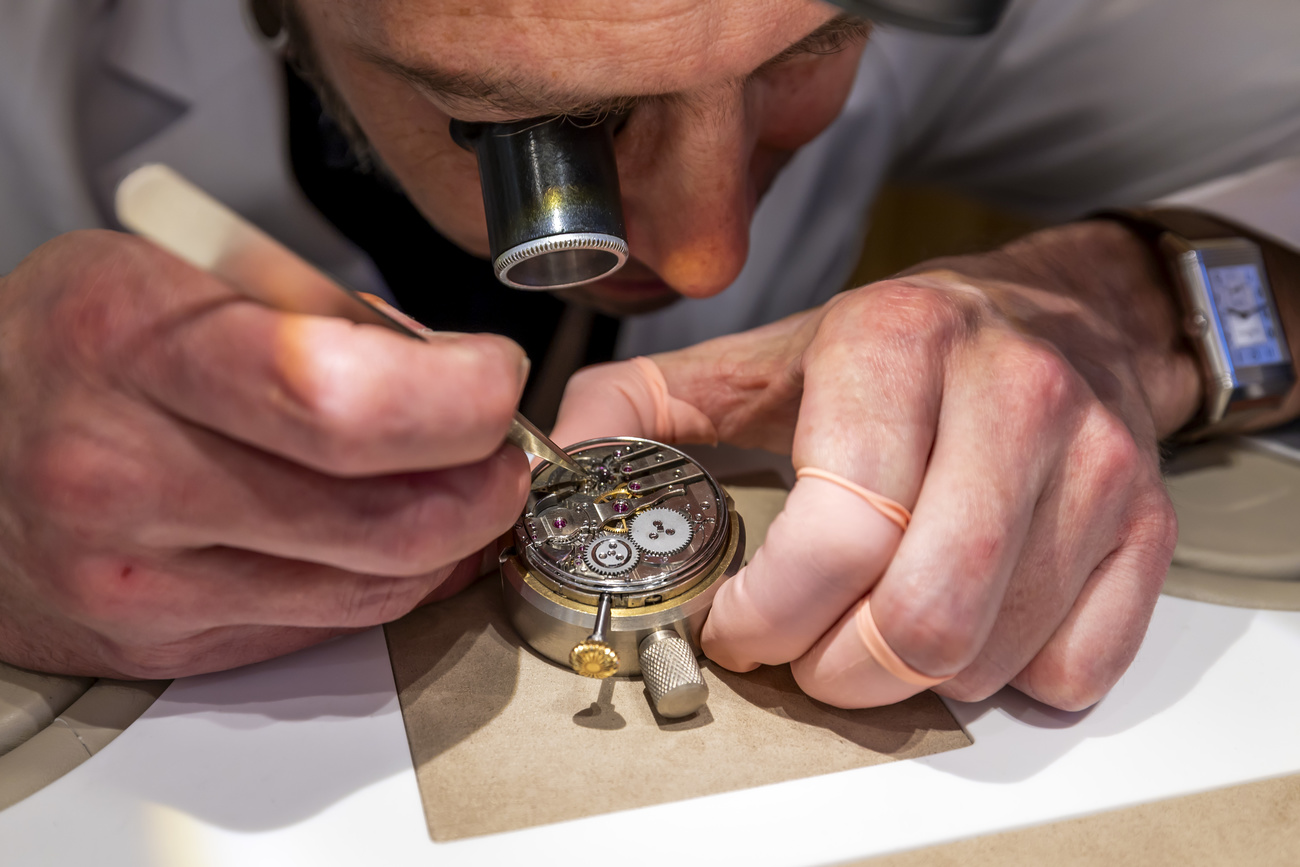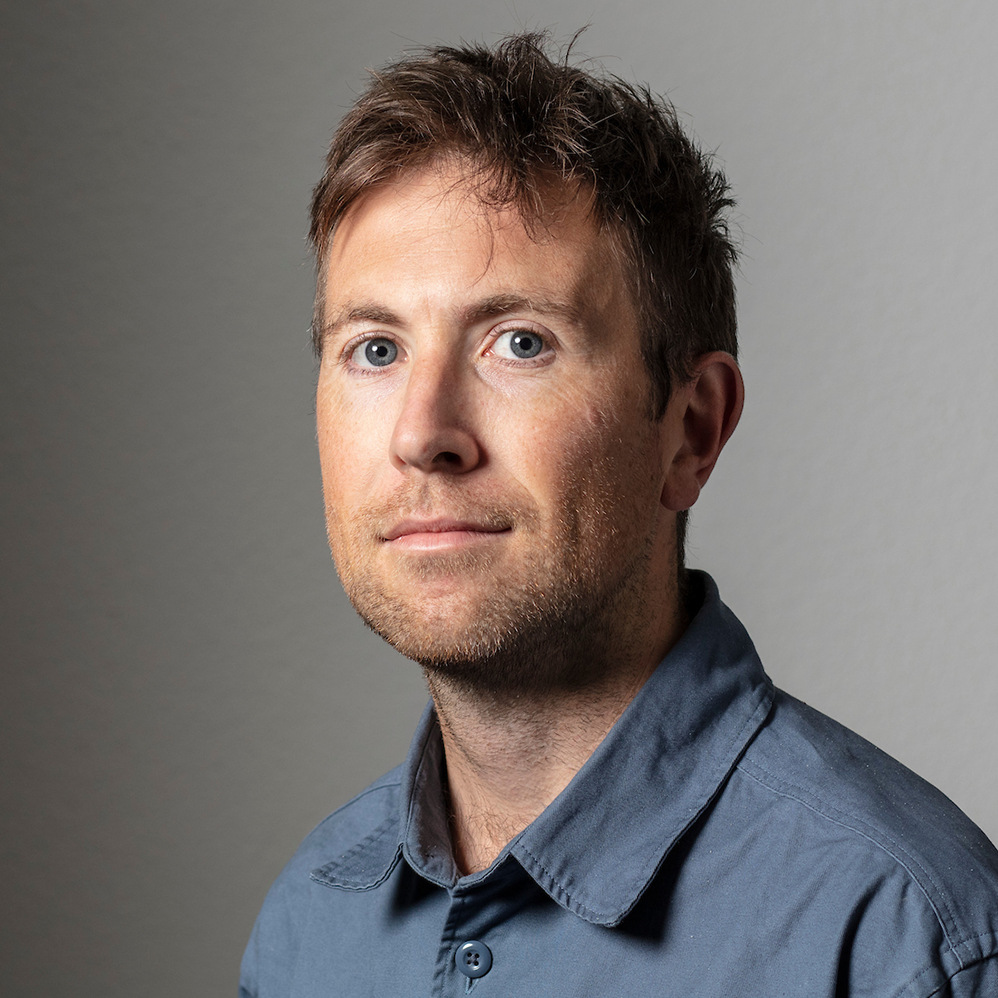Ballet teacher gives lessons in dance and fortitude
From children in diapers to aspiring professional ballerinas and eclectic choreographers, no-one leaves the Basel Dance AcademyExternal link without a lesson in fortitude. The driving force of the academy, weaving together dancers of all ages to culminate in two annual performances, is Galina Gladkova-Hoffmann.

The strong-willed brunette glides across vinyl dancefloors on a wheelchair as she instructs students how to plie, pirouette and polish their pas de deux. She guides with them with a combination of voice and hand gestures.
Gladkova herself was a professional ballerina at the Basler Ballett before a horse riding accident paralysed her from the neck down and forced her to rebuild her life from scratch.
swissinfo.ch meets her after a few hectic weeks preparing students to perform on stage at Theatre La CoupoleExternal link in nearby Saint-Louis, France: a two-night performance in June that came off without a hitch, leaving proud parents and children full of a sense of accomplishment.
Gladkova watched from the wings as her dancers nailed classical ballet excerpts of Ludwig Minkus’s La BayedèreExternal link as well as a dizzying tango suite to the beat of Russian band Taverna Furor, who travelled from Tambov for the occasion. The mood of each scene played out on her face: a symphony of twinkling eyes, sharp glances and sweeping smiles.
Also in the audience, and particularly proud that night, was her own father Nikolai Ivanovich Gladkoff.
“Galina is a fighter,” he told swissinfo.ch during the intermission. “She likes to set and to achieve her goals. She is very strong and motivated, I am very proud of her.”
Christine Stauffer, mother of Marina, a student who did a four-year apprenticeship with Gladkova, was also full of praise. She credited “the sheer amount of energy that [Gladkova] gives out, despite her handicap. She’s always stuck with it and hasn’t shied away from all the hard work.”
A small army of mothers and fathers help to run the show backstage, making sure children are in costume on time.
Ballet students and parents alike often use the word family to describe the community that has grown out of Gladkova’s studio on the fourth floor of a business building in Basel’s Holeestrasse. The venue is narrow and simple, amplified by a strategic wall of mirrors, but it has the benefit of being wheelchair accessible and is not far from Gladkova’s home.
Dance, music, milestones and mentors
Dance and music are overlapping chromosomes in Gladkova’s DNA. Born in Toronto on June 15, 1959, her first name is a nod to Russian ballerina Galina UlanovaExternal link. Gladkova’s mother, Adelaide, watched the final performance of the 20th-century legend at Toronto’s arena, Maple Leaf Gardens, right before going into labour.
A deep love of dance runs in both sides of the family. Her parents – originally from Ukraine, they met in Germany after fleeing repression in Soviet Russia – took ballroom dancing lessons together well into their 80s. They had migrated to Canada via Belgium, where her father, who had studied medicine, worked as a coal miner for seven years.
As a girl, Gladkova practiced her first twirls and fell in love with music while her older sister played the baby grand piano. Her mother took her to the first of many dancing lessons with Lessia Tuhay-bey, a Tatar ballerina whose claim to fame was dancing with the Moiseyev Dance Ensemble.External link
Getting to class involved a one-hour bus ride, but it was worth it. The piano teacher there flagged the tiny talent to Janet Baldwin, who was one of the early pioneers of professional dance in Canada along with her husband Boris Volkoff. “This was proper education,” recalls Galina, who switched ballet schools at age 8. “Not just a hobby ballet class.”

The next turning point came that same year in 1967, when Gladkova attended the first of many dance summer camps. “It entailed being away from home for the first time and it entailed learning to love my art,” said Gladkova. “I had a very, very, very busy childhood.”
When she was older she also attended summer school at the Banff School of FineExternal link ArtsExternal link in Alberta, Canada. There she was lucky enough to learn from two Russian teachers of the Bolshoi Academy. She immediately transitioned from student to a student with translator responsibilities, a feat that earned her a full scholarship two summers in a row.
Hard choices
One of her most difficult, if successful, years was 1978. She had been accepted at the Faculty of Medicine at the University of Toronto, and had completed her Royal Academy of Dancing Exam and the Grade 8 Contrabass exam. All this while combining her own hectic training schedule with teaching dance, and studying Russian on weekends.
The time had come to make a choice – become a professional dancer, musician, or fulfil her father’s frustrated dream of being a doctor?

The choice was clear: she drove off, in a tiny Honda Civic, to the Harkness Dance Center of New York with a bass squeezed onto the passenger seat. There she worked as an au pair and transitioned to the American Ballet Theater, again with a scholarship.
In New York, she attended school in the morning and soaked up culture in the evening, watching the great dancers of her time, including duo Natalia MakarovaExternal link and Mikhail BaryshnikovExternal link. “My life was just one incredible cultural bomb,” she remembered. “It was a fantastic life.”
Swiss dance legend Heinz SpoerliExternal link spotted Gladkova in 1981 and offered her a contract in Switzerland. Galina crossed the Atlantic and joined the Basel Ballet. Her first five-year stint at the company was under the guidance of Spoerli. It was an era of great achievements, including the company’s first international tour and a performance at the Brooklyn Academy of Music (BAM).External link
“There’s a picture on the Brooklyn Bridge of Heinz Spoerli, and if you look at that picture and you look at the dance scene in Europe… there’s a handful of the members who are all directors of major dance companies in Europe right now,” says Gladkova, listing off the names of those who achieved greatness. “Spoerli must have had some sort of a nose.”

In 1985 she married Bernd Hoffmann. After a small break she resumed dancing, again at the Basel Ballet, this time under Youri VámosExternal link. Highlights of that period include performing Carmina Burana in Jerusalem, a close call in Lucerne when a costume assistant forgot to bring her underwear during a quick change between acts, and getting the entire company to freeze during curtain call to help her find her fallen contact lenses.
Off-stage and on a saddle
It was also during that period that she started horse-riding, a childhood passion she once shared with her cousins in Canada, abandoned for decades in part because as a dancer she couldn’t afford to have an accident. In her mid-30s, however, it had dawned on her that she wouldn’t dance forever, so she took the risk of resuming and enjoyed discovering dressage.
“I found the parallels with dance fascinating,” she says.
On the day of the accident, at the family summer house in France in 1995, everything that could go wrong did. Workers that were due to come in the morning showed up late, forcing her to forego her morning ride with Blackjack, a fine Anglo-Arab horse whose trust in Gladkova was absolute. The animal, she remembers, could hold his ground while sweating and shaking as a farming tractor overtook them in a narrow bridge.
But on that hot day he unravelled. As they cantered along an open field, Blackjack kicked up clunks of clay. Wasps had been nesting in the air holes of the dry summer soil. Disturbed, they stung the horse as it cantered. Blackjack yanked his head down and Gladkova, who was sporting non-slip gloves, flew off the saddle.
She somersaulted over the beast and landed on her neck facing the opposite direction of travel.
“I’m looking the wrong way,” was her first thought as she took in the scene from the ground seconds later. “I realised I was in big trouble. The only thing I could do was turn my wrists.”
A neighbour found the horse on the side of the road. She recognized the tell-tale signs of a missing rider – dropped reins and stirrups – and eventually found Gladkova. She had landed next to a riverbed. The local fire brigade came first but was largely at a loss about what to do. The ambulance ride to the hospital was filled with terrors, including the fear of choking if she vomited.
The first week in a non-specialized clinic in France is a chapter she remembers as hell. Gladkova was kept there until she could be transferred to the Swiss Paraplegic Centre in NottwilExternal link, filled with fears that she could die any moment from a complication.
“I can remember seeing out of my window the red [Swiss Air-Rescue] Rega helicopterExternal link with the Swiss cross and I can really remember the feeling that my saviour had come and I was getting out of there,” she said. “I was going home.”
Starting from scratch
The next two years entailed the type of tedium that she prefers to skip over. Days, weeks and months filled with all kinds of treatments and physical therapy; learning to function – trying to function – in new ways. “After a spinal cord injury, you sleep about 18 hours a day,” says Gladkova. “You’re a vegetable. You have to learn to do everything. I couldn’t even hold a spoon.”
It took time and a few opportunities to bring her back out of her cocoon. For four years she managed a string quartet, making the most of her language skills (she speaks French, German, Russian and English). She also had a brief stint as stage manager for the Mariinsky BalletExternal link who came from Saint Petersburg to Switzerland, where she was the perfect go-between linking Russian-speaking and Swiss technicians and engineers.
Now, more than two decades later, she can type 12 emails in under 30 minutes with her thumbs, smoothly navigate the music remote, drive using a special steering wheel, and dance circles around her students in her wheelchair. “Perfect practice makes perfect,” is a lesson that applied to her dance career as much as her recovery process.

She still needs help getting dressed and carrying out basic daily activities. But none of that prevented her from opening a summer dance camp in France in 1999 – a bid to turn the scene of the crime into something positive – and running the Basel Dance Academy since 2006.
In 2014, she even expanded the academy to absorb a former salsa studio on the same floor and installed new state of the art equipment with the help of the Basel Board of Education. Sergey Baranov, a frequent guest teacher, helps. They dream up choreographies that consider a broad spectrum of ages but also allows top talent to shine.
“Our Academy is not just for fun, it prepares you for a career as a professional dancer,” says Baranov. “Of course, in the beginning little children come for pleasure but then they learn a little, watch the older dancers and often totally fall in love with ballet. We have very talented girls and we do a lot to help them with their future careers, whether in a theatre or a ballet group or an entertainment company in Switzerland or wherever they might get a contract.”
Gladkova is particularly proud of the academy’s one to five boy to girl ratio. Every show includes a special choreography that allows her young men to blossom. This year, it was the tango choreography pulling together the work of six choreographers and six composers. She also invited Russian dance star Artur Baranov to team up with her best ballerinas. The show is barely over and she has already imagined the scenes and steps for next season.

“Dance is a gift. Dance is leaving your public with something that they feel. Doing the right steps, the right choreography, is of course important, but if you don’t give a present from your heart, if you don’t give a piece of your heart to your public, then don’t dance at all.”

In compliance with the JTI standards
More: SWI swissinfo.ch certified by the Journalism Trust Initiative









You can find an overview of ongoing debates with our journalists here . Please join us!
If you want to start a conversation about a topic raised in this article or want to report factual errors, email us at english@swissinfo.ch.